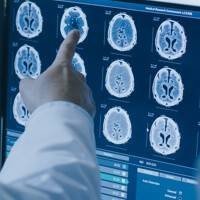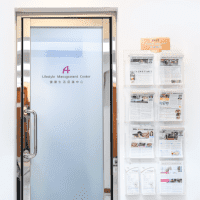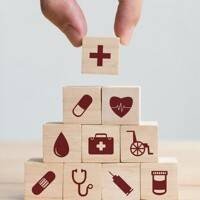Current Statistics
Stroke is a common disease. In 2018 alone, there were 3,016 deaths resulting from stroke in Hong Kong. Being the fourth commonest cause of death in the city, it causes severe disability, which brings a heavy burden to the patient’s family as well as the whole society. The damages that stroke can cause are not to be underestimated.
What is Stroke?
Stroke is a type of cerebrovascular disease. When stroke symptoms appear, an average of 1.9 million brain cells die each minute because of a sudden lack of oxygen. Patients could become seriously disabled and this takes a toll on the patient’s family and society, which is why stroke should not be taken lightly.
Stroke can be classified into two main categories, with ischemic strokes being the first type. These are strokes caused by a clot in a blood vessel in the brain and about 80% of stroke cases belong to this category. The other 20% are hemorrhagic strokes, which are caused by a bleed in the brain that results in damages to the cranial nerves. Hemorrhagic strokes have a higher mortality rate than ischemic strokes.
Symptoms
Some patients may experience a mini-stroke before the onset of an actual stroke. A mini-stroke is called a ‘transient ischemic attack’ (TIA) and is a temporary neurological condition that leads to the symptoms of stroke. It is caused by a temporary disruption in the blood supply to part of the brain. Early management of mini-strokes can help prevent actual strokes from happening. The main symptoms of stroke can be easily remembered by the acronym ‘FAST’:
F = Face Drooping
A = Arm Weakness
S = Speech Difficulty
T = Time to call for medical help
Symptoms of Mini-Stroke
The following symptoms usually last from a few minutes to an hour. Patients often return to their normal state afterwards as if nothing had happened.
- Numbness or muscle weakness on one side of the body or the face
- Sudden onset of slurred or garbled speech or difficulty understanding others
- Sudden, severe headache
- Vertigo or loss of balance or coordination
- Blindness in one eye
Ischemic Stroke VS Hemorrhagic Stroke
| Ischemic Stroke | Hemorrhagic Stroke | |
|
Overview |
It happens when the blood supply to part of the brain is interrupted or reduced, which accounts for about 70 to 80% of the total number of stroke cases. |
Also known as intracerebral hemorrhage. It happens when a blood vessel in the brain suddenly ruptures and bleeds. |
|
Symptoms |
Muscle weakness or numbness of one side of the body, uncoordinated gait, difficulty with speech, etc. |
It usually happens fast and can become life-threatening easily. The bleeding can cause blood clots to build up in the brain, leading to increased intracranial pressure, which can cause symptoms such as severe headache, vomiting, confusion, and even falling into a coma. |
Causes of Stroke
- Blood vessel problems: For example, atherosclerosis is a condition in which fatty plaques build up on the walls of blood vessels, which narrows the blood vessels, affects the blood supply, and increases the risk of blood clots. Fatty plaques on the blood vessel walls may also loosen and block the vessels, leading to stroke. Other vascular problems such as cerebral aneurysm, cerebral arteriovenous malformation, cerebral cavernous hemangioma, etc., may also cause cerebral hemorrhage.
- Irregular heartbeat: This increases the risk of blood clots forming. Stroke occurs when a blood clot blocks the small blood vessels in the brain.
- Other causes: Having medical conditions that are more likely to cause blood clots or taking medicines such as “blood-thinner” or certain herbal medicine can also lead to stroke.
Risk Factors for Stroke
- Family history of stroke
- Aged 50 or above. The older you get, the higher the chances.
- History of TIAs (transient ischemic attacks)
- Metabolic syndromes such as diabetes, high blood pressure, and high cholesterol
- Cardiovascular disease, such as coronary heart disease, arrhythmia, etc.
- Obesity
- Lack of exercise
- Stress
- Excessive alcohol use
- Smoking
How is Stroke Diagnosed? Treatments for Stroke
-
- Preliminary examination: It includes monitoring the patient’s blood pressure, blood sugar, and blood lipid levels as well as analyzing the patient’s lifestyle habits. A check on the medical records and clinical examinations would be conducted as well.
- Imaging examination: Based on the preliminary examination results, further examinations may be considered, which include imaging examinations such as cerebral neurovascular computed tomography, magnetic resonance scanning (MRI) and ultrasound imaging.
Treatments for Stroke
There is a golden period for treating stroke. The earlier the treatment, the better the recovery.
Treatments for Ischemic Stroke
Intravenous thrombolytic therapy The injection must be given within 4.5 hours after the onset of symptoms. This can effectively improve the patient’s prognosis and reduce the mortality rate.
However, if the patient has medical conditions that will accelerate bleeding in the brain or other organs, or if the patient has a history of cerebral hemorrhage, or if the treatment time has already passed 4.5 hours after the onset of symptoms, intravenous thrombolytic therapy is not recommended.
Catheter-based thrombectomy
A catheter will be inserted into the artery to reach the site of thrombosis for thrombus aspiration. This treatment is suitable for larger thrombi.
Treatments for Hemorrhagic Stroke
Find out the source of the bleeding Doctors must first evaluate the patient’s condition, such as observing the changes in intracranial pressure and finding out the location of the bleeding with the help of CT scans, so as to stabilize the patient's physiological indices. Appropriate treatment options can be considered afterwards. Surgery If the intracranial pressure is too high, medication will be given or shunt surgery will be performed to drain out the excess fluid or to remove the blood clots, so as to lower the intracranial pressure.
If the bleeding is caused by a vascular malformation or an angioma, it must be managed through a craniotomy or a catheter-based surgery.
Golden Period for Stroke Recovery
Based on the location and size of the brain damage, stroke patients will have various degrees of physical disability and problems in swallowing, speech, cognition, and psychological health. If patients can undergo rehabilitation within three months after the stroke onset, their recovery would be faster and the irreversible degenerative conditions (such as stiffness and deformity of limbs and joints) can be avoided.
Comprehensive Stroke Rehabilitation
A comprehensive stroke rehabilitation program should include rehabilitation in these areas:
- Physical functioning: This includes the patient’s physical status, cognitive ability, self-care ability, and work skills.
- Social functioning: This refers to the possibility of performing a certain role in society. For example, if the patient is a mother, will she be able to take care of her child? If the patient is a driver, is he/she able to drive again?
- Appropriate investigations to detect relevant risk factors and manage accordingly to prevent recurrent stroke
Rehabilitation Treatments for Stroke
A combination of physiotherapy, occupational therapy, and speech therapy can help stroke patients get back on track with their social lives.
- Physiotherapy: It focuses on the mobility and coordination of the limbs.
- Occupational therapy: It focuses on the training of cognitive skills (such as memory and responses to the outside world). Appropriate tools will be designed or selected for patients according to their needs, such as tableware, to enhance patients’ independence and autonomy in life.
- Speech therapy: It focuses on muscle training in various parts of the mouth to help improve the problem of slurred speech and the difficulty in swallowing.













.jpg)














